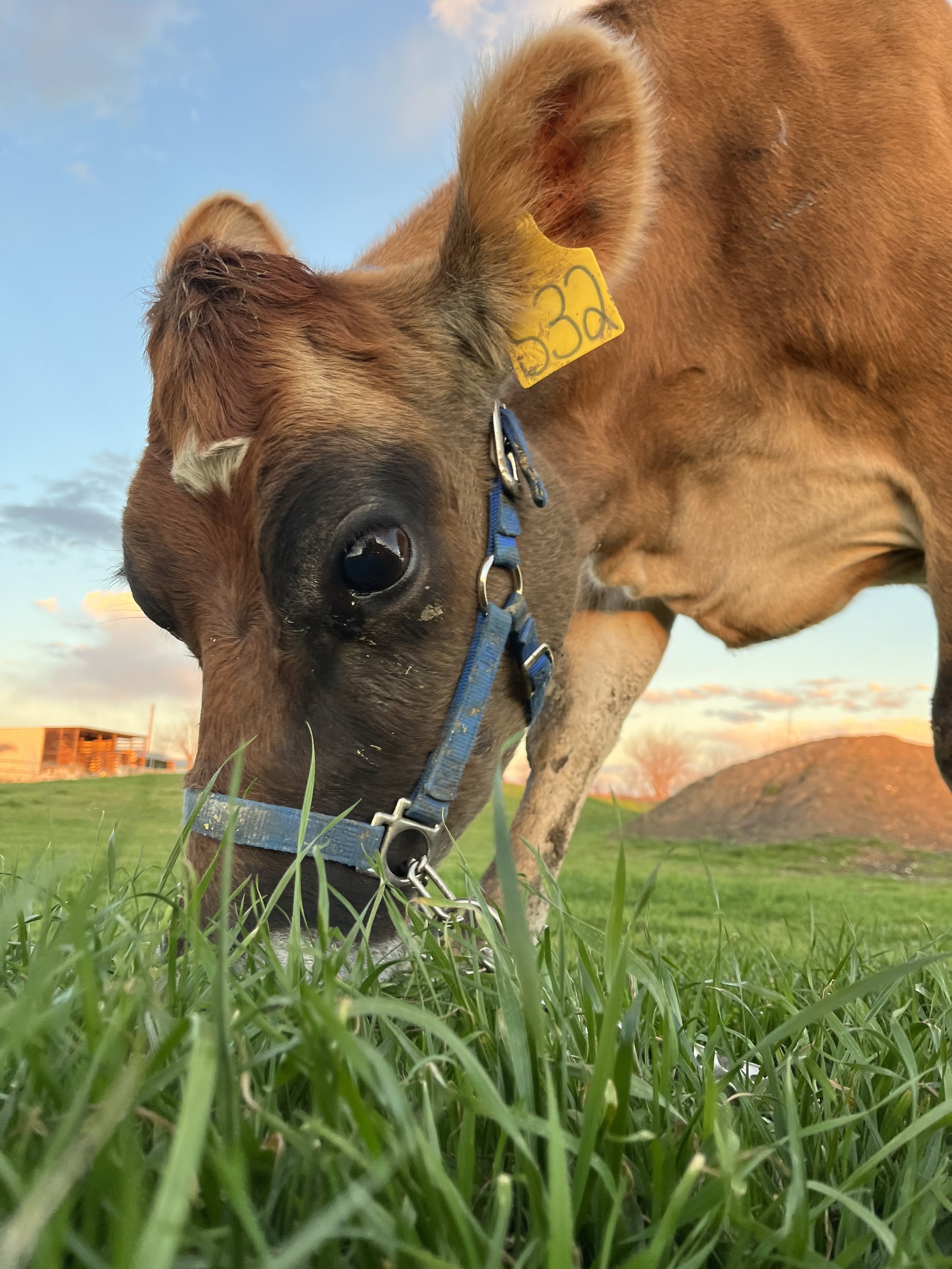Herdshare & Raw Milk
What is a herdshare agreement?
Texas laws make it difficult to purchase raw milk. If not a licensed, raw milk dairy, you essentially have to own a cow to be able to consume non-pasteurized, non-homogenized (raw) milk. This is where a herdshare is handy. A herdshare is an agreement made between you and a local farm. By purchasing a “share” in a farm’s dairy herd, you become part-owner of that herd. As an owner, you can enjoy the luscious, creamy milk, fresh from the cow.
How does it work?
The farm decides how many shares are available for purchase. This is largely dependent on the productivity of the dairy herd. A share is assigned an approximate, volume equivalency. On our farm, one share is equivalent to a single, half-gallon of milk. A fee is assessed to the individual who wants to become a herdshare member. This fee is either one-time or annual. In our case, we assess a lower, annual fee. This fee pays for the ownership in the dairy herd. It is possible to own multiple shares, which equates to a higher weekly volume of shared milk. In addition to the upfront herdshare buy-in, a monthly fee is assessed, which offsets a portion of the cost to board, feed and milk the cows.
What is the cost at Sowers Sustainable Farms?
Annual herdshare buy-in: $75 per share
Monthly maintenance fee: $35 per share
*Half shares are also available, upon request.
How do I get my milk?
We have formed a partnership with Amber Oaks Ranch to expand your options for milk pick-up. Of course, you can pick up your milk at the farm or you can designate a local farmer’s market where Amber Oaks Ranch vends. We ask that you try to maintain a single pick-up location.
Meet the dairy herd at Sowers Sustainable Farms




frequently asked questions
What is raw milk?
Raw milk is straight from the cow udder. It is not heated, nor homogenized. Raw milk contains a number of enzymes, nutrients and probiotics. It is rich in calcium, magnesium, phosphate, B vitamins, Vitamin D, iodine, potassium, fats, proteins and lactose (carbohydrate energy). Many individuals with lactose intolerance are able to consume raw milk, especially when the milk is A2/A2. There is a lot of available information detailing the benefits and risks associated with raw milk - check them out.
What is A2/A2?
There are two types of proteins found in milk: whey (20%) and casein (80%). Casein has a number of isoforms, but the one most commonly discussed is beta-casein. There are two beta-casein variants: A1 and A2. A2 is the original form of beta-casein and is found in human milk. A1 beta-casein developed as a genetic mutation, over time and is commonly found in commercially available, pasteurized milk. Research suggests that A2A2 milk can be more readily digested and more easily absorbed, while A1 milk (A1A1 or A1A2) is more difficult to digest, invokes gut inflammation and can contribute to general gut discomfort.
What do you feed the Dairy Herd? Do you use medication?
We holistically manage our dairy herd. In other words, we try to maintain as healthy of an environment as possible and provide our animals with good food, so we don’t have to intervene to maintain maximal health. Our dairy cows primarily eat pasture-grass and hay (when necessary). We do provide a small ration of grain (organic, locally sourced) when they are being milked. We rotationally graze our animals, so that we can maximize the nutrient density of our pastures. We also feed the cows garden goodies when available and in excess. If medical intervention is necessary, we first use homeopathic remedies. It is only after all of these options are exhausted that we turn to pharmaceuticals. We do not vaccinate or deworm routinely. We only use antibiotics as a last resort. We discard milk for recommended periods if pharmaceutical intervention is required.
Do you Test your milk?
Being a small farm, we do not routinely test our milk. We do, however, perform annual disease testing on our herd to ensure that all of our animals are healthy. We also take great care in maintaining clean conditions in the milking parlor and during the filtration and bottling process.

